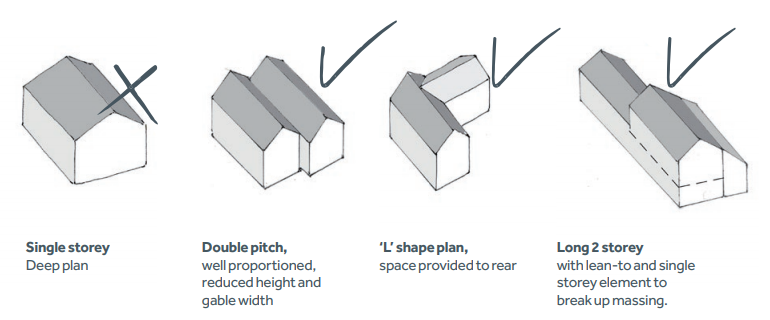
How to consider building detailing and materials in your new building design
This is the fourth and final blog in our ‘how to’ series to help celebrate the launch of our new Design & Placemaking Guidance. In this blog we discuss how self-builders or developers should consider building detailing and materials in their new building design.
To achieve the high quality of development we are looking for in the National Park, building form, mass, scale, window proportion and detailing is very important to consider.
Massing
When it comes to massing, often narrow plan buildings connect with the rural sense of place within the National Park. However, we recognise that deep plan houses can be attractive and appropriate in certain contexts such as within a town, when adjacent to large deep plan Victorian villas, or where the building proposed is a landmark building.

Windows and doors
Window and door arrangements are also important. here are our tips for consideration in your design:
- Keep the range of opening to a minimum so the building does not appeared cluttered
- Get the right balance between wall and window with eaves as low as possible
- Keep the arrangement simple, observing the central axis
- Upper floor windows should generally not be bigger than the lower windows
Materials
The materials used are key to good design and it is important not only to consider appearance but also:
- embodied energy – natural materials don’t take as much energy to produce than processed materials and therefore have low embodied energy
- durability – the longer it lasts, the better it is for the environment as you are not throwing away materials after only a 30 year lifespan
- whether the material can be reused or recycled – wood, metal and stone are easily recycled and reused but plastics are more difficult or impossible to recycle
Traditional natural materials (i.e. stone, timber, slate, clay, metal) tend to meet these requirements, often being local and reclaimed materials.

Plastics (UPVC windows) are not favoured in new developments.
More information on how to consider materials and detailing in your design can be found in our new Design & Placemaking Guidance.
To read the other blogs in this four part series, visit our planning advice and guidance pages.

